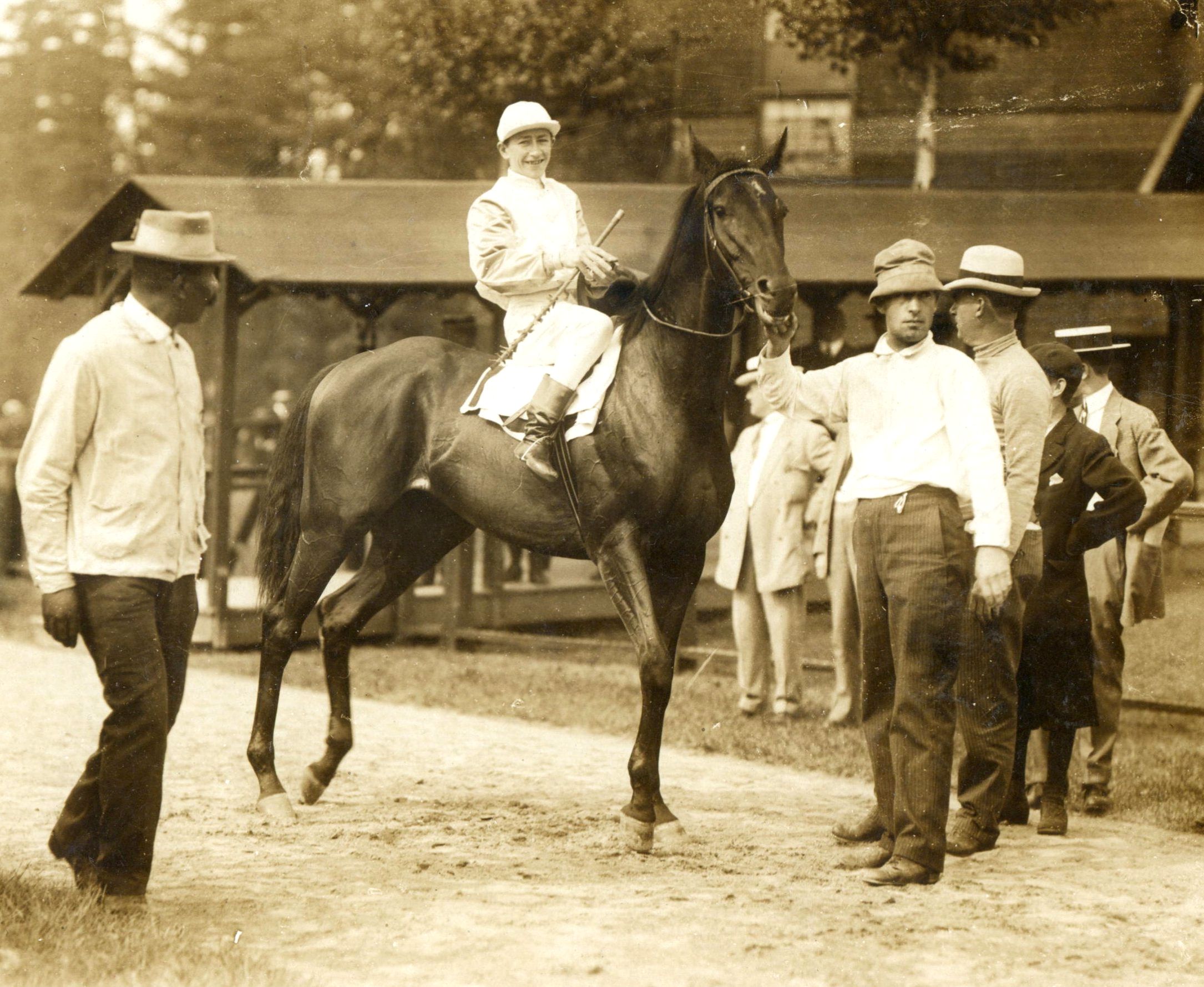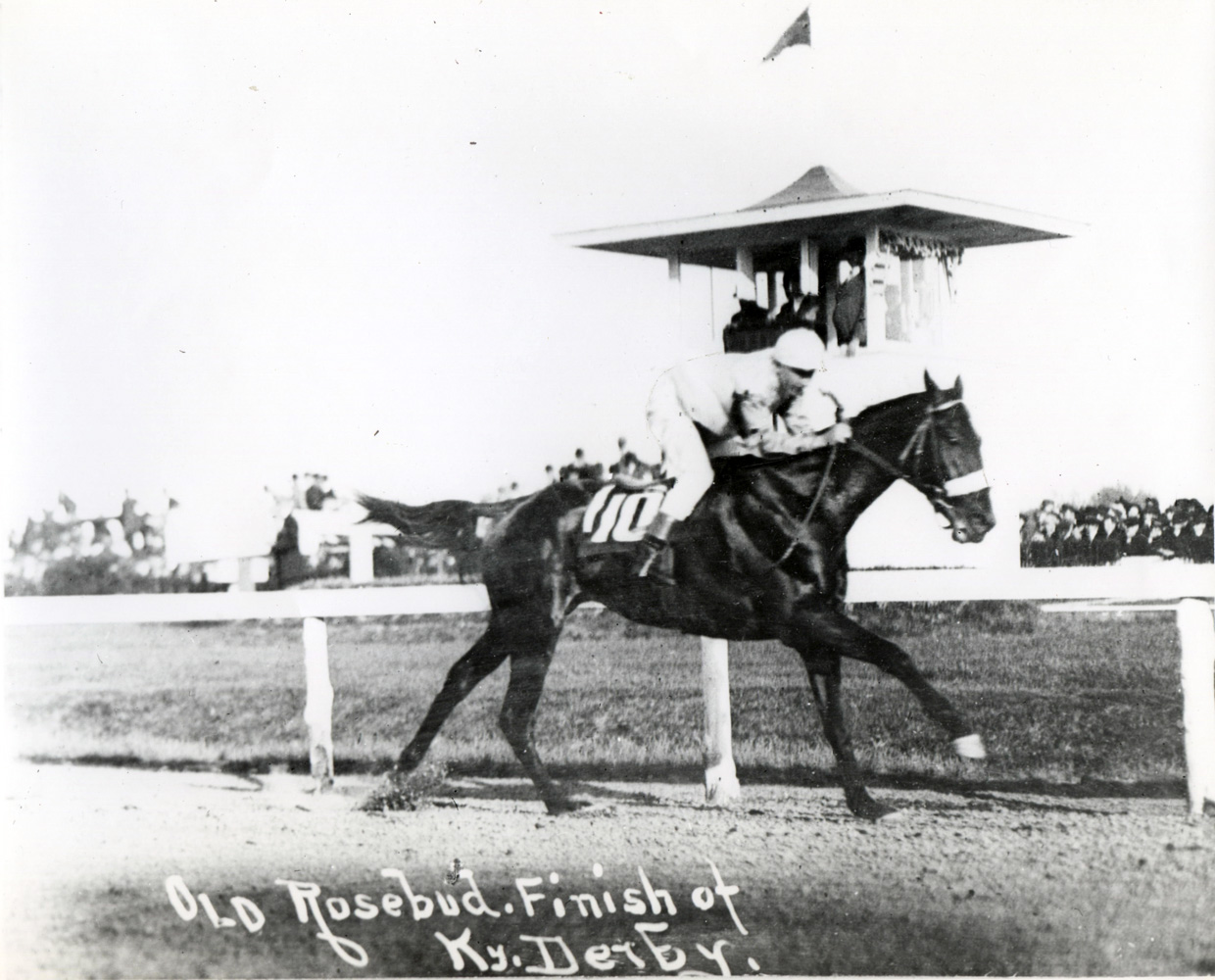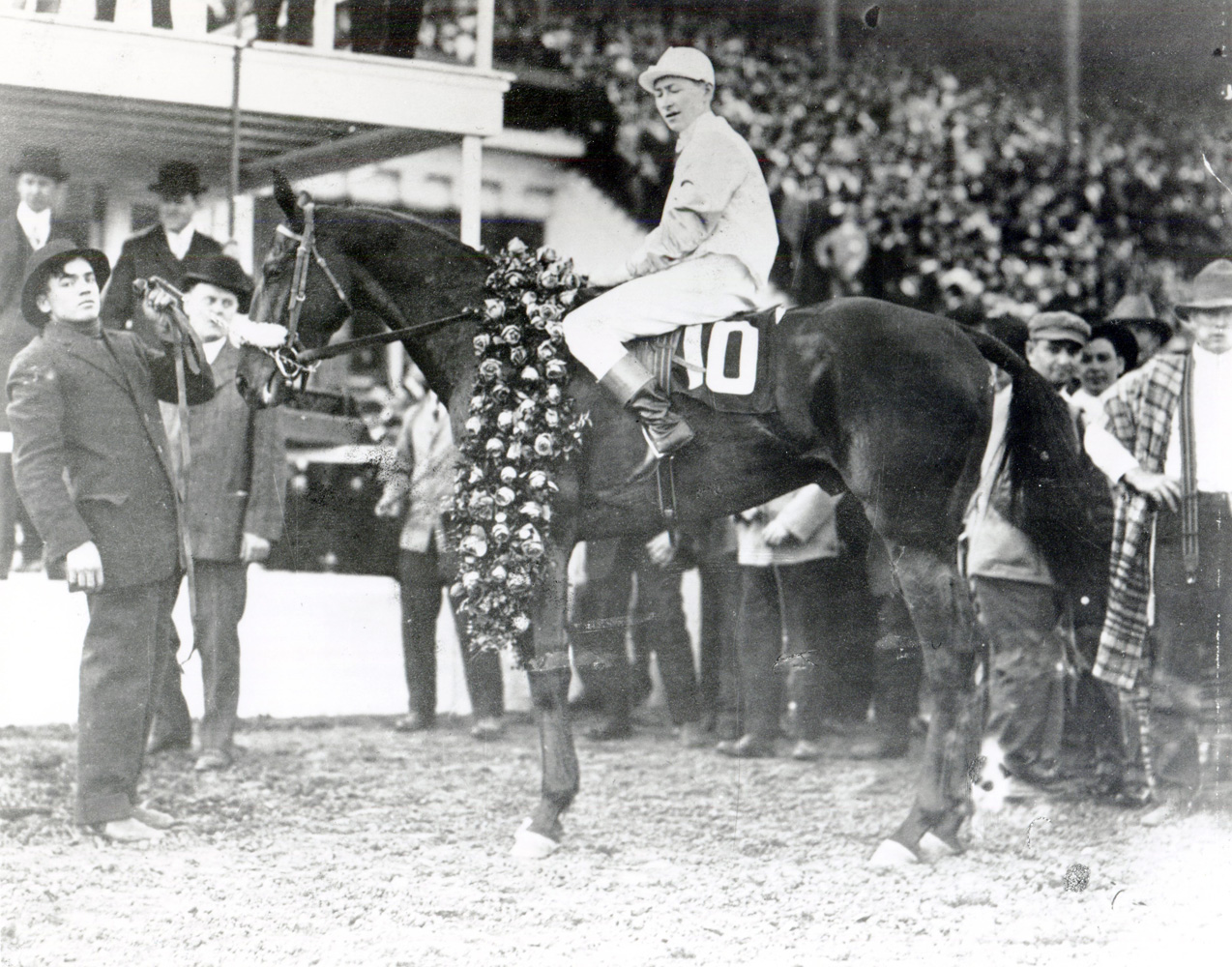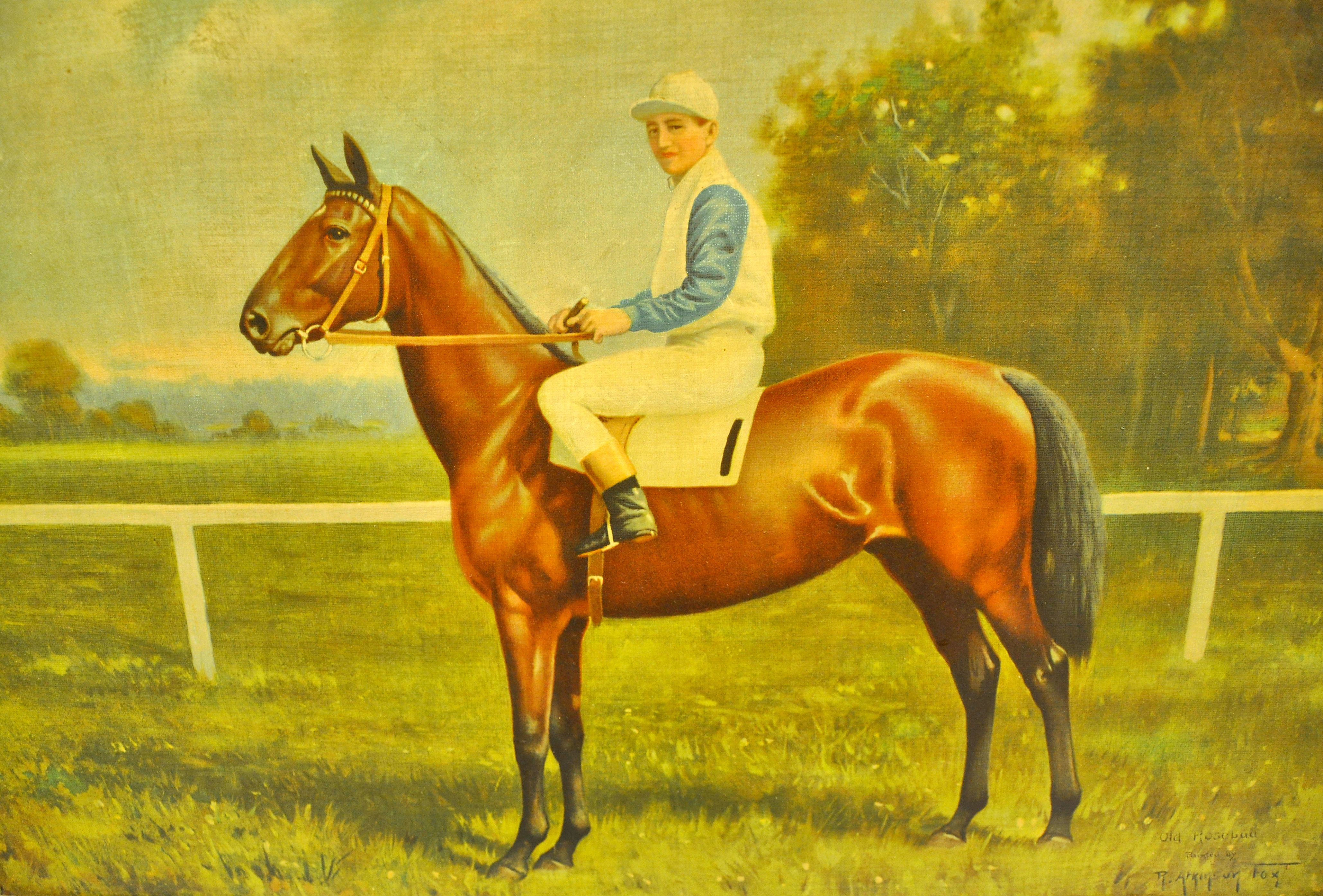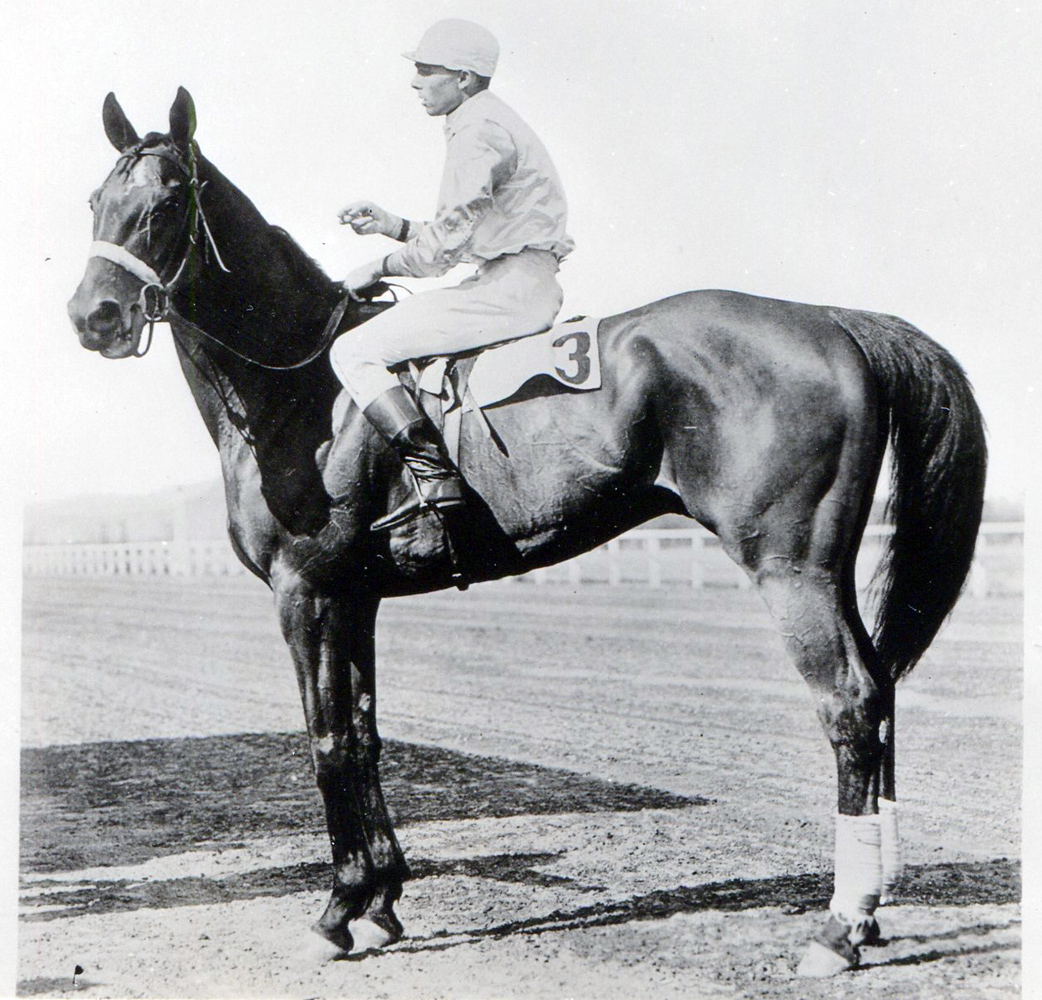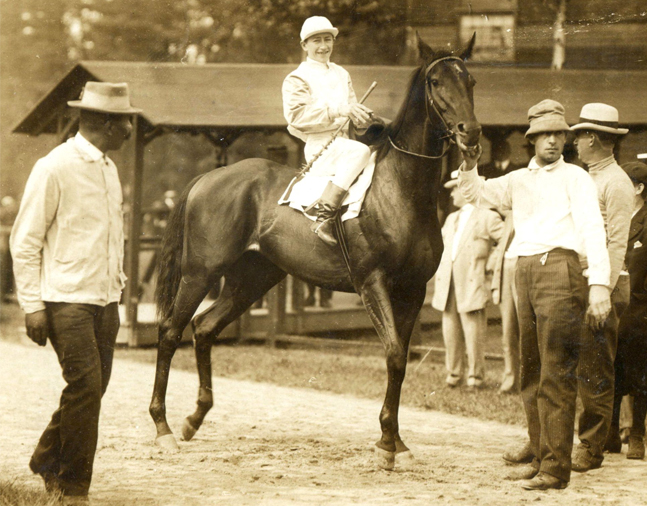Old Rosebud (KY)
Old Rosebud was the undisputed king of the comeback.
In a remarkable and unique career that spanned almost a decade, Old Rosebud displayed a fierce competitive nature and the courage of a champion time by overcoming a series of significant injuries to become one of the greatest racehorses in the annals of the American turf.
Racing Record
80
Starts
| 1913 | 14 | 12 | 2 | 0 | $19057 $19,057 |
| 1914 | 3 | 2 | 0 | 0 | $9575 $9,575 |
| 1915 | 0 | 0 | 0 | 0 | $0 $0 |
| 1916 | 0 | 0 | 0 | 0 | $0 $0 |
| 1917 | 21 | 15 | 1 | 3 | $31270 $31,270 |
| 1918 | 0 | 0 | 0 | 0 | $0 $0 |
| 1919 | 30 | 9 | 7 | 5 | $12182 $12,182 |
| 1920 | 8 | 1 | 2 | 0 | $1295 $1,295 |
| 1921 | 2 | 1 | 0 | 0 | $700 $700 |
| 1922 | 2 | 0 | 1 | 0 | $200 $200 |
Biography
Old Rosebud was the undisputed king of the comeback.
In a remarkable and unique career that spanned almost a decade, Old Rosebud displayed a fierce competitive nature and the courage of a champion time by overcoming a series of significant injuries to become one of the greatest racehorses in the annals of the American turf.
A diminutive bay gelding by Uncle out of the Himyar mare Ivory Bells, Old Rosebud was foaled in 1911 at John E. Madden’s famed Hamburg Place near Lexington, Kentucky. Trainer Frank D. Weir purchased Old Rosebud for a mere $500 before selling him to Hamilton C. Applegate.
Naming the horse proved to be quite easy for Applegate. His family owned a farm near Lexington named Old Rosebud Stock Farm, as well as a distillery that had a principal brand labeled Old Rosebud. Hamilton was also the secretary at Churchill Downs and owned a significant number of shares in the track. It seemed like a fitting Kentucky story — a promising horse, good whiskey, and the Run for the Roses.
Old Rosebud debuted in February 1913 with a victory in the Yucatan Stakes in Juarez, Mexico. He set four track records from May through June and then came to Saratoga and won the Flash Stakes and United States Hotel Stakes to prove he was the best horse in his crop. Old Rosebud finished his 2-year-old campaign with a record of 12-2-0 from 14 starts and won his final nine races of the year. He didn’t race after the middle of August that year because of the first of several ailments that hounded him throughout his career.
After extending his win streak to 10 in his 3-year-old debut, Old Rosebud delivered a spectacular effort with an eight-length victory in the 40th Kentucky Derby, covering the 1¼-mile distance in 2:03⅖ to set a track record that stood for 16 years. Old Rosebud had won 11 in a row and was 14-for-16 in his career with a record-setting performance in the Run for the Roses. He was a true superstar.
The glory, however, didn’t last long. Shipped to Belmont Park for the Withers, Old Rosebud severely bowed a tendon and it appeared his career was through. Weir sent Old Rosebud to a farm in Texas, assuming the great gelding would never race again, but 32 months later, Old Rosebud, now a 6-year-old, had miraculously recovered and seemed eager to return to the track.
Old Rosebud was better than ever.
In one of the greatest handicap campaigns ever, Old Rosebud won 15 of 21 starts — including eight stakes — in 1917. He took the Clark Handicap, Carter Handicap, Delaware Handicap, and Queens County Handicap, among others. Along the way he set three track records, equaled another, and concluded the year with earnings of $31,720.
Then came another tendon injury.
It was back to the plains of Texas for another year and a half. Again, Old Rosebud battled his way back. He returned to the races as an 8-year-old for a demanding campaign of 30 starts. He was no longer the speed marvel he once was, but Old Rosebud was still a force to be reckoned with. He won nine times and was in the money 21 times in those 30 starts in 1919.
“We cannot recall another horse which came back, so often, so good,” Kent Hollingsworth of The BloodHorse wrote.
Old Rosebud was sent out nine times as a 9-year-old, wining only a highweight handicap at Belmont. He was still game, but it was clear he was a mere shadow of his former self. Old Rosebud continued to battle physical ailments and raced only twice at 10, winning a claiming race at Belmont in September 1921 for the 40th and final victory of his career. True to form, Old Rosebud pulled up slightly lame after the race.
It would have been a fitting sendoff to retire Old Rosebud after his 40th win, especially at the track where he suffered his first major injury following his Derby win, but Applegate and Weir decided to press on with their former champion.
There was no happy ending for the great Old Rosebud. On May 17, 1922, Old Rosebud stepped in a divot during a claiming race at Jamaica Racetrack and broke down in the stretch. There was no recovery this time. After extensive consultation with veterinarians, Weir decided to put his gallant fighter to sleep on May 23, 1922.
The final chapter of Old Rosebud’s life was tragic, but the legacy he left behind is one of remarkable courage, perseverance, and great skill. Old Rosebud posted a record of 40-13-8 from 80 starts and earned $74,729. He was inducted into the Hall of Fame in 1968.
John McCabe, Old Rosebud’s regular rider, reminisced about his great mount in a 1970 interview.
“Old Rosebud was as good as any of them — Man o’ War, Count Fleet, Citation, Secretariat,” McCabe said.
Weir agreed.
“Old Rosebud is the kind of horse one sees once in a lifetime,” he said.
The New York Times said Old Rosebud was “one of the greatest racehorses ever to sport silks on the American turf.”
Achievements
Champion 2-Year-Old Male — 1913
Champion Handicap Male — 1917
Triple Crown Highlights
Won the Kentucky Derby — 1914
Media
